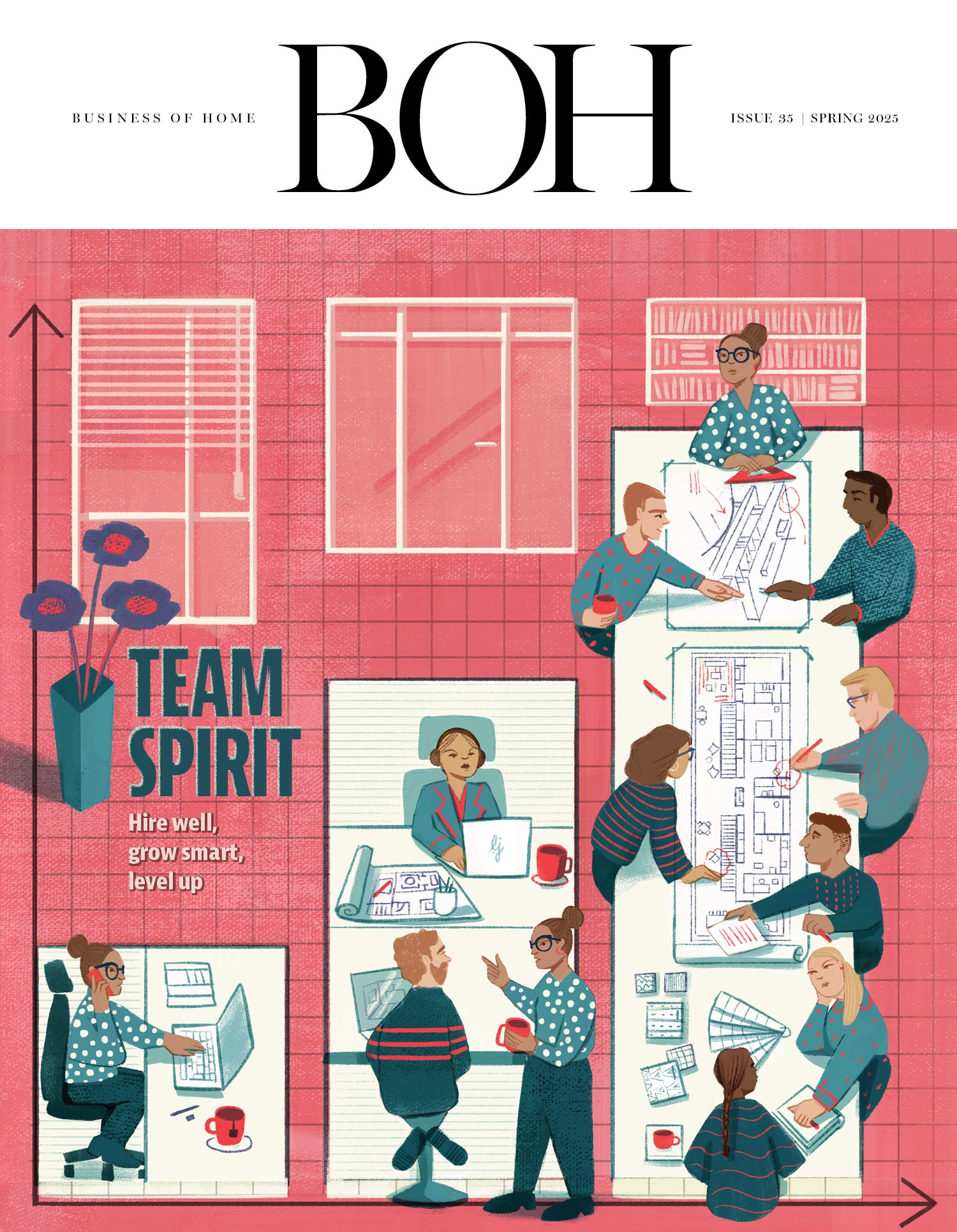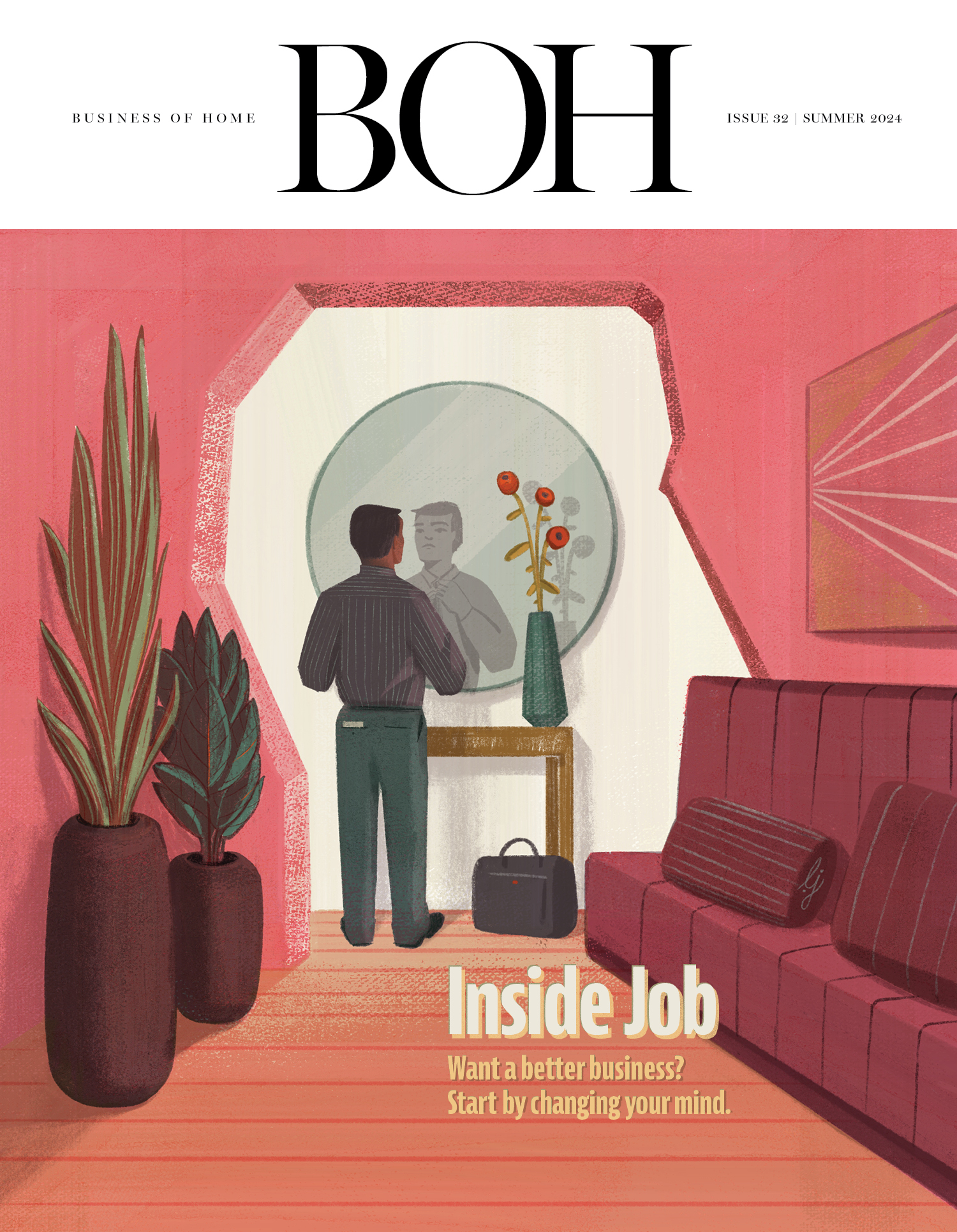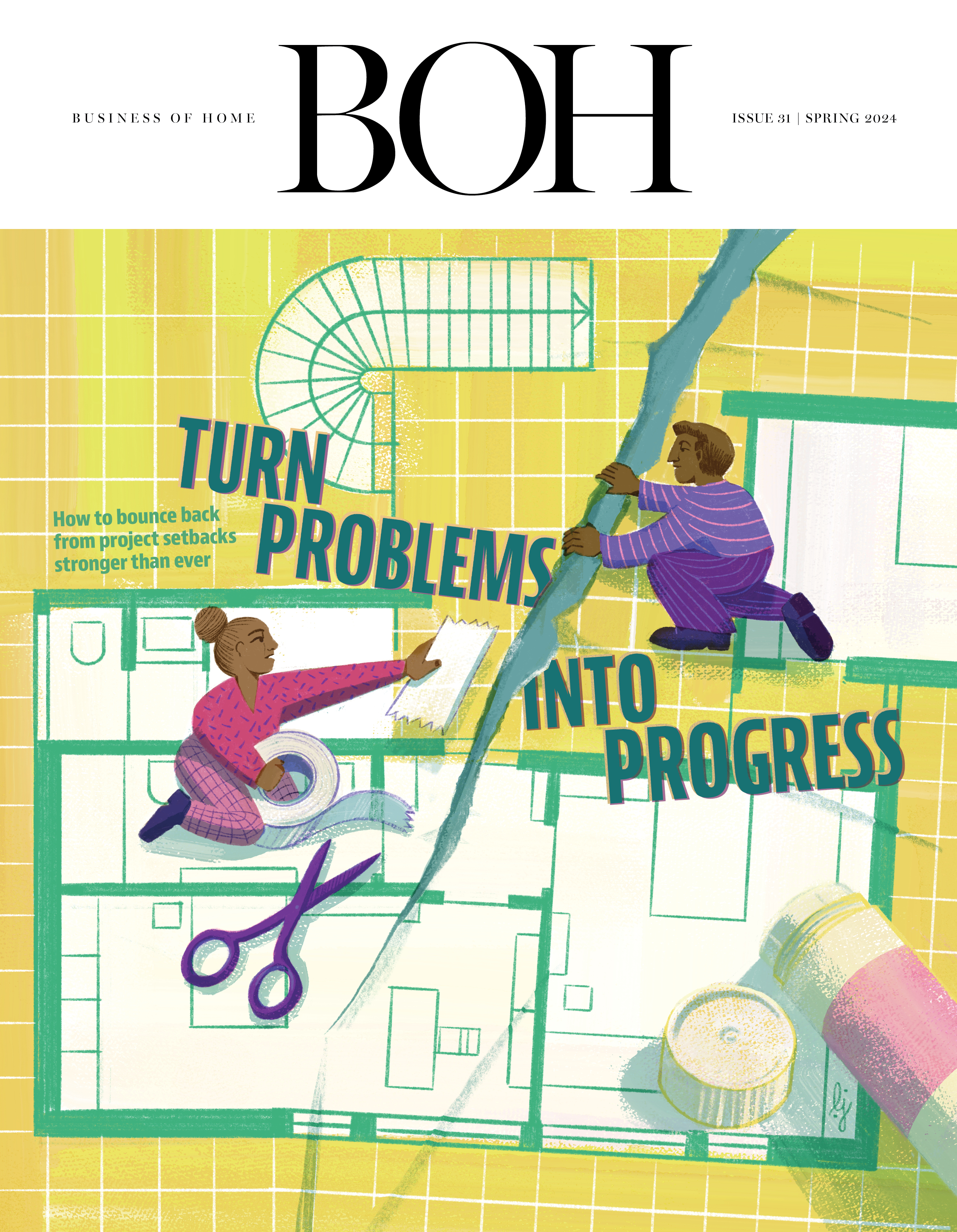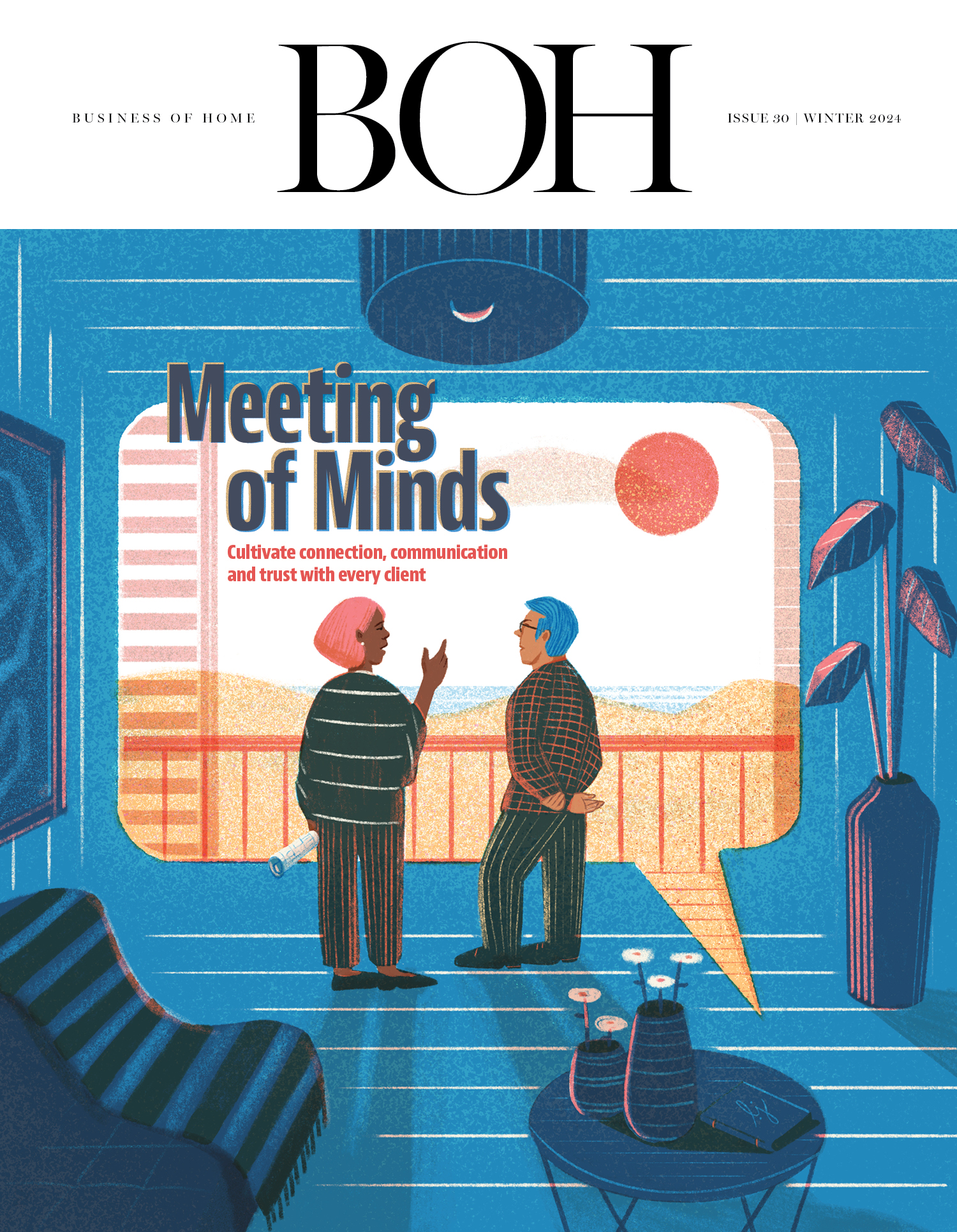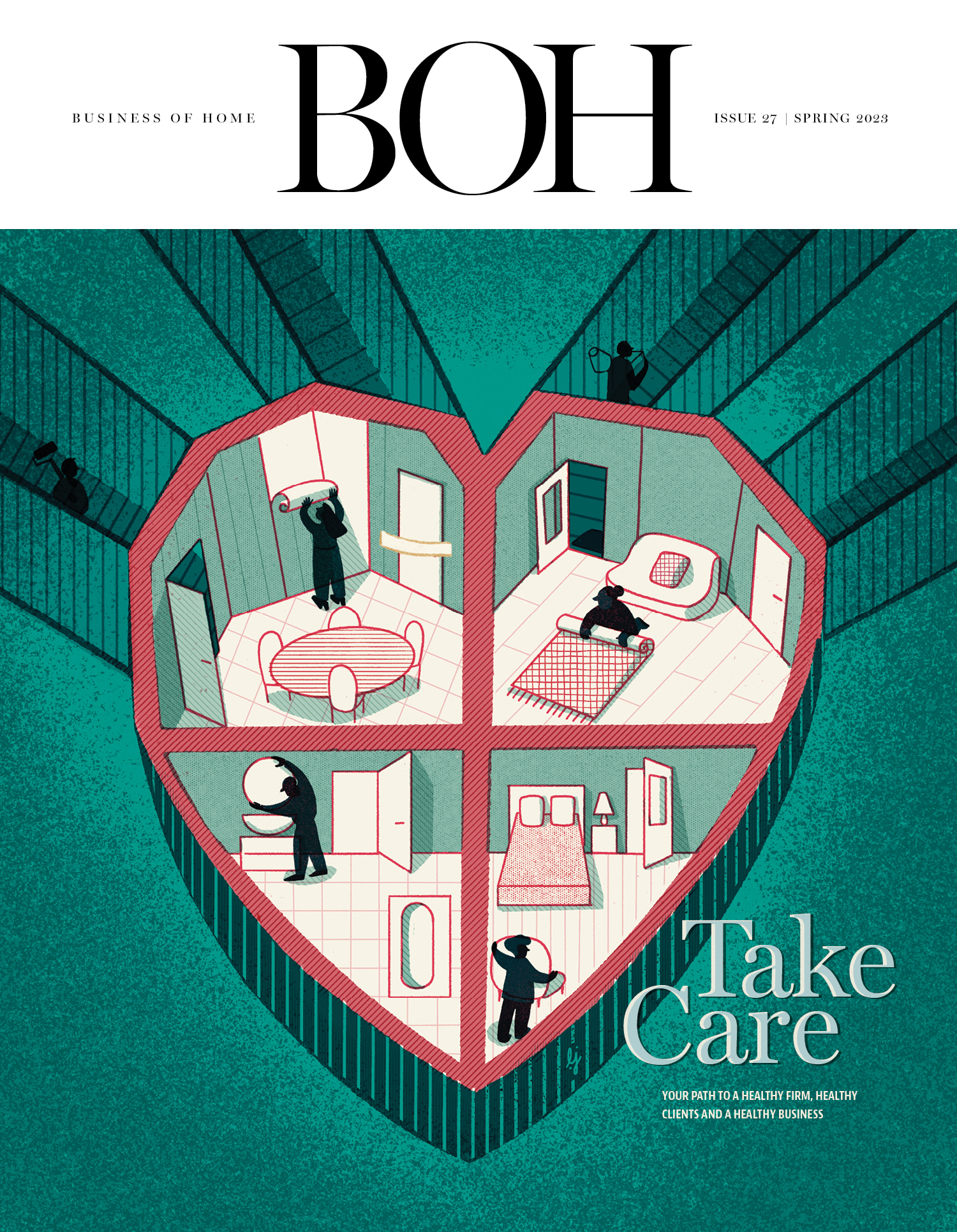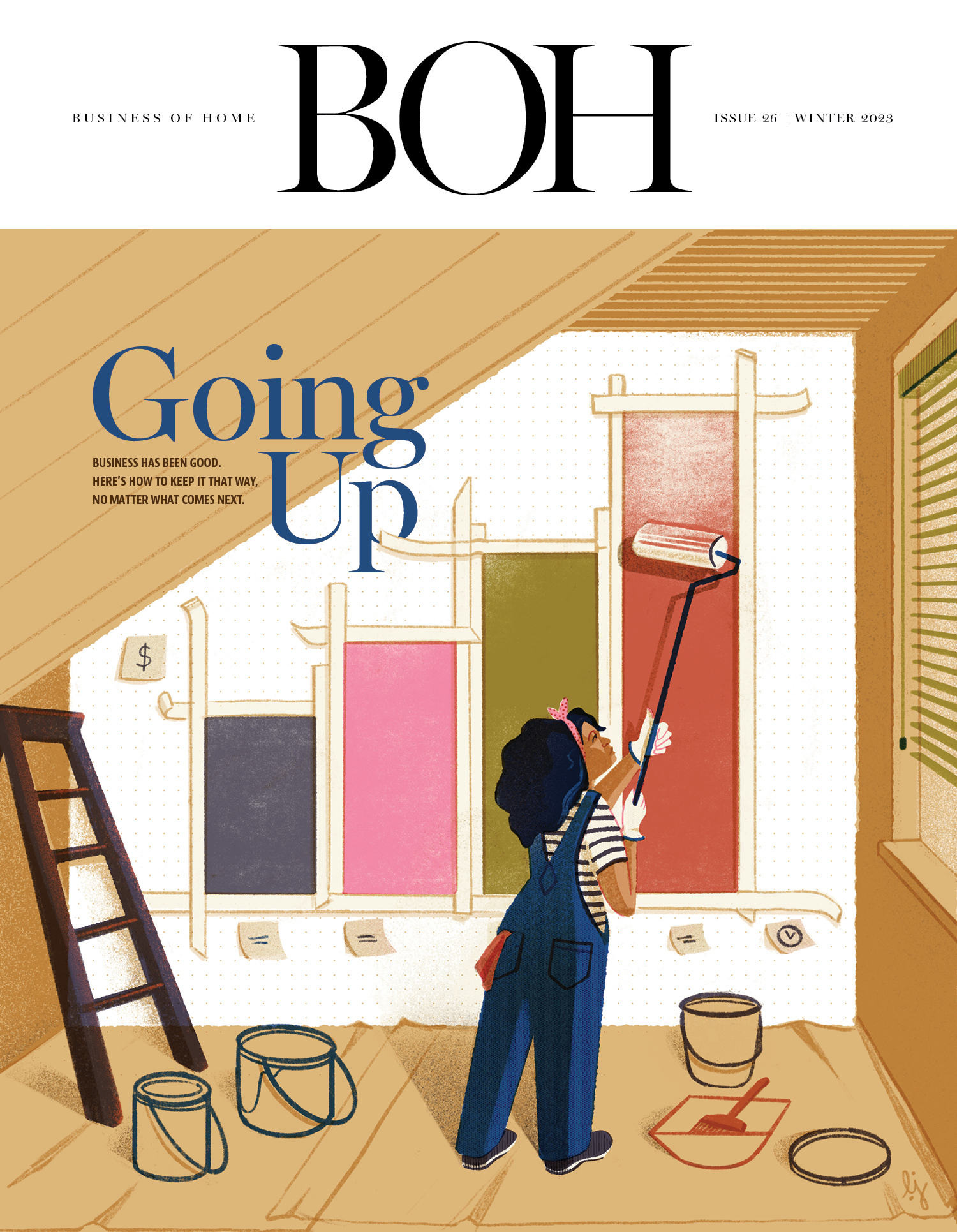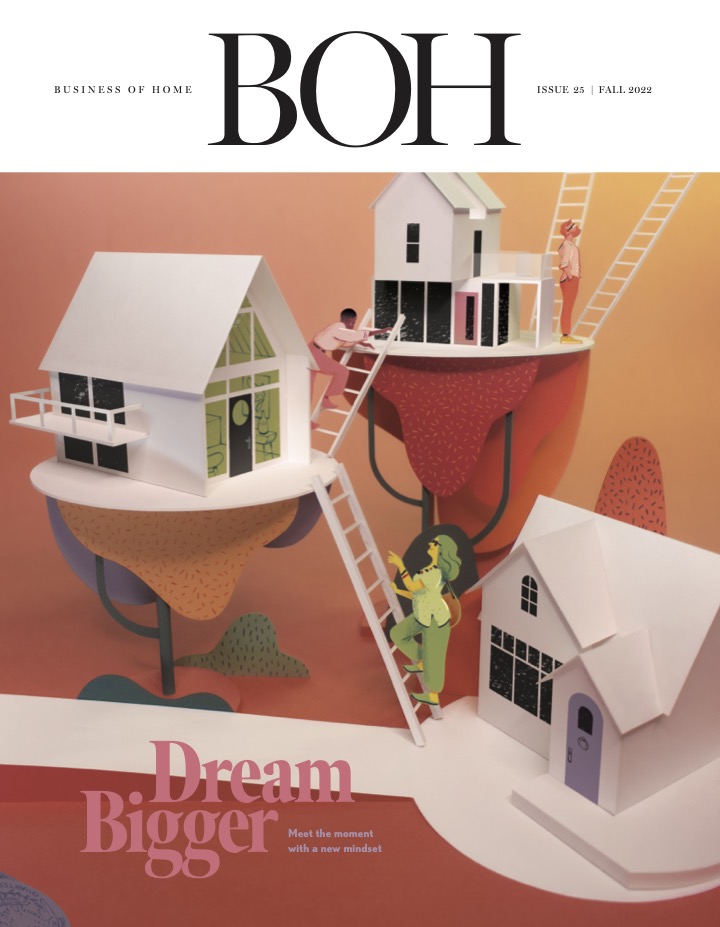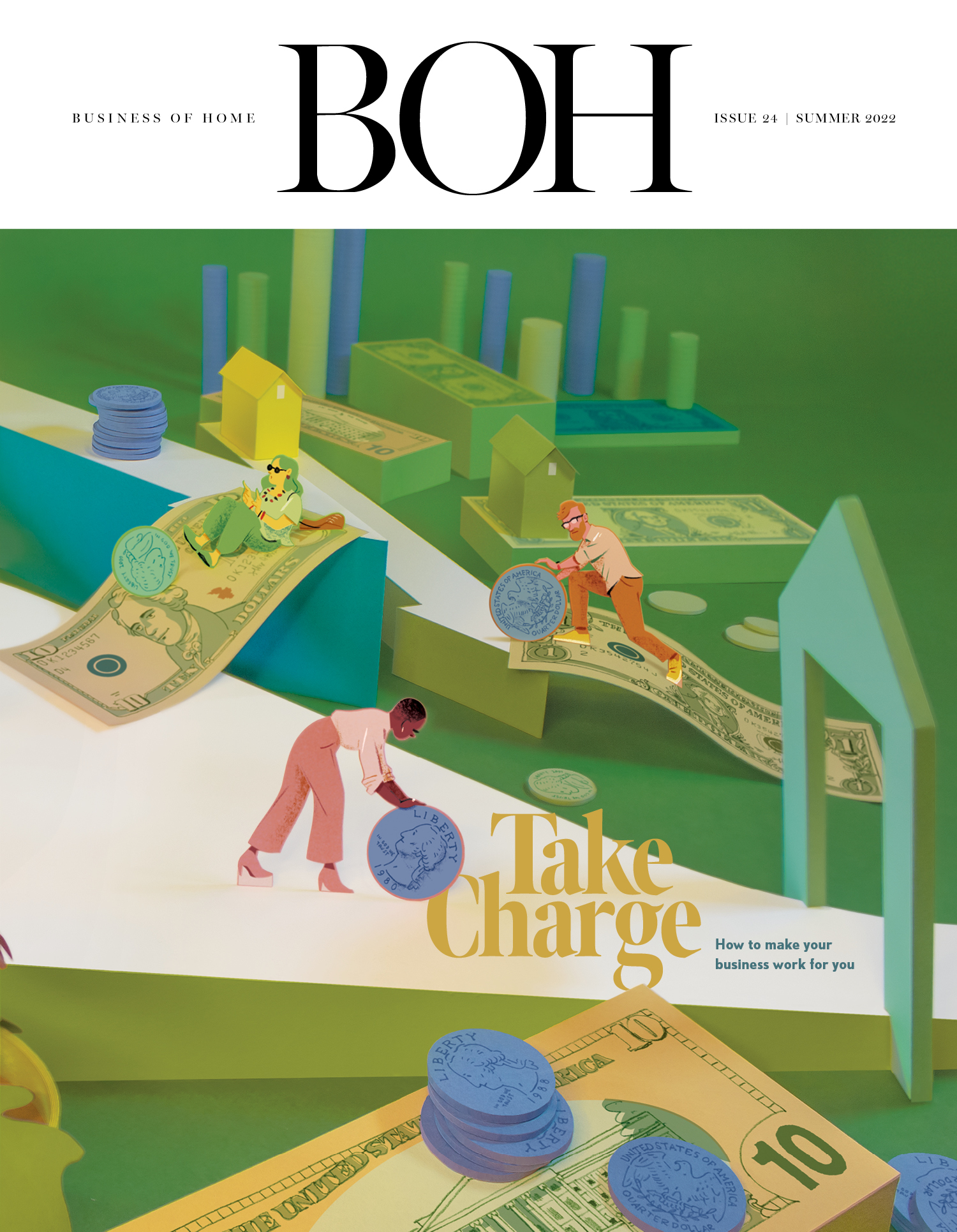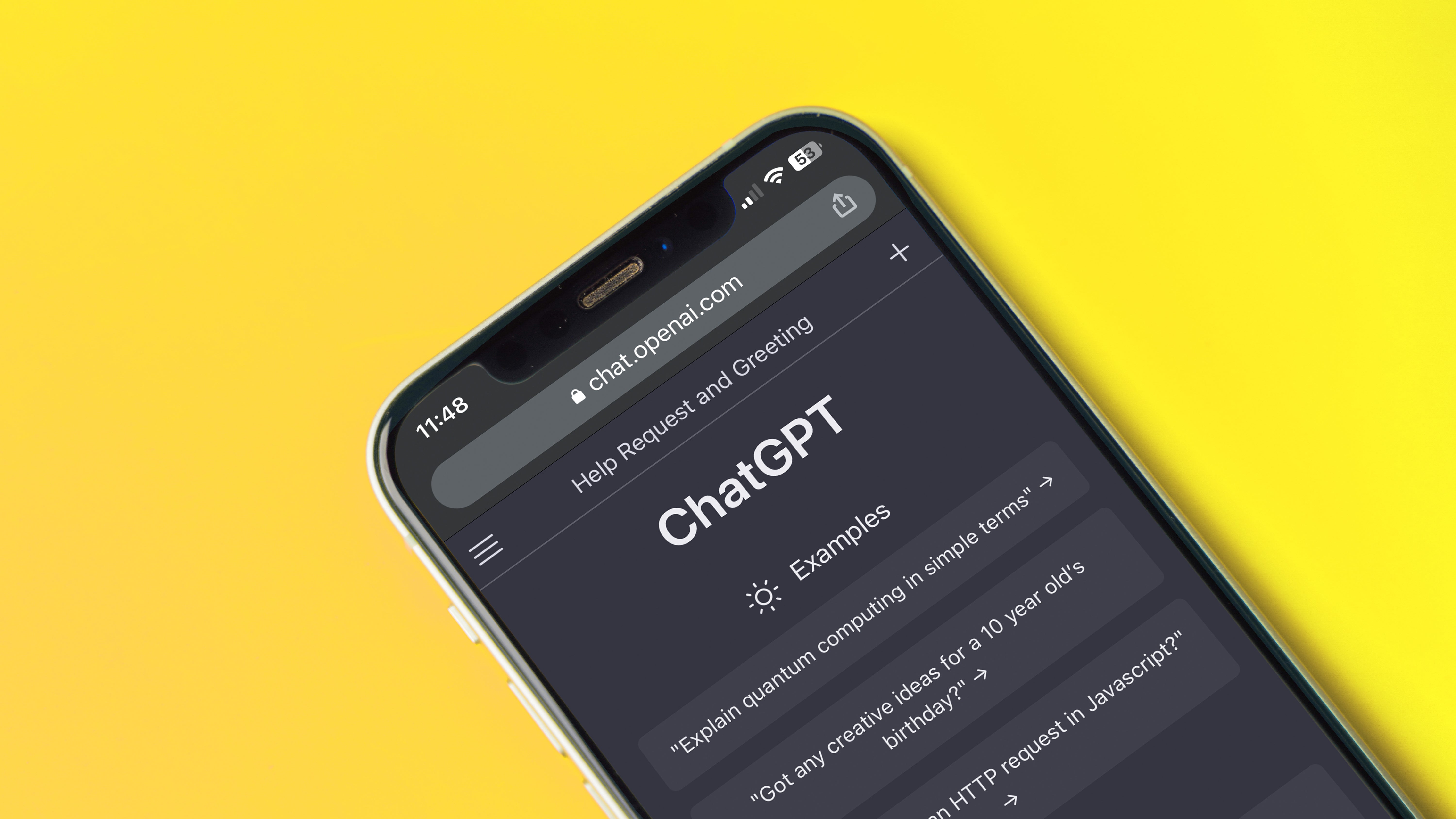Early in 2023, Boston designer Jim Cappuccino was going through the recent leads that had come in through his website when he noticed something unusual. In the field asking how the prospective client had heard about the firm, they had written “ChatGPT.” This was only a few months after the chatbot’s public launch, and while it was hoovering up users and making headlines, the tool still felt like a novelty.
When he took the call, he discovered that this person had typed in some basic information about their project and asked ChatGPT to recommend a designer. The project turned out not to be a fit, but Cappuccino was tickled by the experience, telling Business of Home later that year: “I know ChatGPT can make stuff up. But I like to joke that, since the client had typed in ‘great Boston designers’ and my name came up, it was telling the truth this time.”
Mea culpa time: In the article that included Cappuccino’s aforementioned interview, I made a prediction that proved to be shortsighted: “It’s unlikely that this kind of open-ended search will lead to a ton of new business for any one designer.”
Two years later, it’s safe to say that guess was wrong. ChatGPT may not yet be netting “a ton” of leads for any individual firm, but designers are absolutely getting work from it and other AI-powered search tools—and it’s a trend that’s likely to continue. While much of the industry’s focus has been on worrying that artificial intelligence was coming to take designers’ jobs, we’ve overlooked the fact that it’s also getting jobs for designers.
Take Nicole Fisher of BNR Interiors. Last month the Hudson, New York–based designer was in the midst of a promising discovery call when she realized the potential client had gotten her name from ChatGPT. “I didn’t know that was a thing,” says Fisher. “[The client] said she had just typed in ‘interior design full-service Hudson Valley’ and we were the ones who popped up.”
On June 18, interior designer–turned–marketing expert Emma Tessler will help creative professionals take their Instagram strategy to the next level, and show them how to use the platform to build brand visibility, convert followers into clients and cultivate community. Click here to learn more and remember, workshops are free for BOH Insiders.
Or go to the other side of the country, where San Diego–based designer Rachel Moriarty was recently hired to design a Padres-themed condo overlooking the major league team’s stadium. On the jobsite, Moriarty was chitchatting with the client when they made a surprising confession: They had found her firm using ChatGPT. “He even showed me the series of inputs he had put it in, and what sources [the chatbot had drawn from]. It had pulled from Instagram,” says Moriarty. “It’s a really good project. On top of that, it’s not a little one.”
There’s little doubt that Fisher and Moriarty are two of many. Leslie Carothers, founder of Savour Partnership, a consulting firm for designers and design industry brands, recently wrote a blog post that included Moriarty’s experience, as well as that of another designer who had gotten a job through ChatGPT, and one who had seen a surge of search traffic from the site. “Your future client is finding you through using ChatGPT,” says Carothers.
Darla Powell, the founder of Wingnut Social, an agency that helps designers develop marketing and search engine optimization strategies, echoes Carothers, saying that she’s seen her clients get more leads from AI-driven search in recent months. “People are finding us that way,” she says. “It’s definitely becoming a focus.”
THE NEW SEARCH
What’s behind this phenomenon? In simple terms, more and more people are using ChatGPT for more and more things. When OpenAI debuted the tool in late 2022, it was a phenomenon, amassing 100 million users in two months. If you were caught up in the early hype, it was easy to get the impression that everyone was already using it. But ChatGPT has grown considerably since then: Last month, OpenAI CEO Sam Altman claimed that it has in the neighborhood of 800 million users now, roughly one-tenth of the world’s population.
At the same time, the chatbot itself has gotten better, and users are finding new ways to channel its capabilities. Early on, much of the focus was on how it could help with specific tasks: It could write poetry, give advice and help high school students cheat on their homework. Then last year OpenAI enabled ChatGPT to search the “live” internet as opposed to staying confined within its training data. This year, the company added shopping links. Increasingly, instead of just asking ChatGPT to tone-check an email, users are getting travel tips, recipes and, yes, recommendations on designers.
Even with hundreds of millions of users, ChatGPT only represents a tiny fraction of the internet’s search volume (some estimates peg it at something like 1.5 percent). Maybe more consequential, at least for now, is the effect its runaway success has had on Google. Sensing that the upstart is muscling in on its dominance, the search giant has fully embraced AI, creating a cycle of reciprocity: As ChatGPT has tweaked its tools to compete with Google, Google has begun to work like ChatGPT.
You may have noticed recently that when you type in a simple query into Google, you often get an “AI Overview” at the top of the results page. Those are only getting more common, with a recent study pegging them as appearing in 13 percent of all search results for March 2025—double the volume since 2024. Even more notable: Google recently unveiled something called “AI Mode,” allowing users to forego the classic search experience entirely in favor of chat-powered results.
Predictions are tough. But right now Silicon Valley’s brightest minds are forecasting that the future of search looks a whole lot less like digging through a list of blue links and a whole lot more like a conversation with a chatbot.
OPPORTUNITIES AND CHALLENGES
An AI-powered search future has both upsides and downsides for designers. The biggest challenge is scarcity. If someone types “interior designer Chicago” in a Google search right now, they’ll get links to many designers’ pages; a similar query to a chatbot will surface far fewer results.
That’s bad for all the designers who won’t show up in an AI-powered search. For the designers who do, the chances of getting a lead are likely better. A “classic” Google search is a shot in the dark: You quickly type in a few words and spend a few minutes vetting the links. AI searches, meanwhile, tend to be more top-heavy, with the user spending more effort defining what they’re looking for, and getting back a more targeted list in return. (The results surfaced by AI may be more valuable to searchers as well: Google says that its AI overviews deliver fewer links, but that users end up spending more time once they click.)
It’s too soon to draw sweeping conclusions about this new landscape, but among the designers who have gotten jobs from ChatGPT, there’s a sense that an AI-powered lead is a good one. “It was almost pre-vetted in some sense,” says Fisher. “The client had typed in what they were looking for in a clear way, and it was exactly what we do.”
The byproduct of this shift is a new battlefield in the long-running SEO wars. Five years ago, the struggle was clawing your way to the top of Google results. The new challenge is getting your business to be noticed by chatbots. This concept is so new that it doesn’t even really have a name yet—AIO (artificial intelligence optimization), GEO (generative engine optimization) and GAIO (generative AI optimization) are some current contenders—but that hasn’t stopped a cottage industry of entrepreneurs from cropping up, promising tips and services that will get you on ChatGPT’s radar.
Some designers are going right to the source. “I was very cautious of AI [at first],” says Andrea Small of Washington, D.C., firm The Adored Nest. “But I started to pick up my own use of ChatGPT for everyday things and in my business, and it was like Google on steroids. … I asked ChatGPT to evaluate my online presence and started making changes to my website right away.”
Some of the boilerplate recommendations for optimizing AI search are lightly technical, but most are fairly straightforward. Powell says you still want to build authority by having trusted sources link back to your site, and you still want to have a site that loads quickly on mobile—things that were important before AI search came along.
But getting noticed by chatbots involves a slightly different approach. Because AI runs on natural language queries as opposed to keywords, you want your site to be written in a clear and informative style. Don’t flood the zone with buzzwords or present unspecific information—bland statements like, “I design timeless interiors that blend old and new” won’t help you in an AI search. Do clearly state where you work and what you do.
“It becomes more of a holistic strategy,” says Powell. “You want to present clear, digestible information on your site. You want to have an FAQ where you’re answering questions. And you want to lean into your niche. If you’re a high-end interior designer who does feng shui in your area, you need to lean into that across all your platforms, and show up in articles talking about that.”
Niching is a crucial component of optimizing for AI searches. Prospective clients may spend serious time going back and forth with a chatbot trying to home in on exactly what they’re looking for in a designer, all before they ever ask it for a list of names. Where a typical SEO strategy might be optimizing for “interior designer Chicago,” an AI strategy might be optimizing for “full-service interior designer in Chicago who specializes in working with families who don’t want to sacrifice style for comfort and have a dog.”
“AI doesn't just search, it recommends,” says Carothers. “And it recommends those interior designers whose websites help it understand exactly what that designer offers.”
Though much of the rhetoric around AI has embodied dystopian or utopian extremes, the shift toward chatbot-powered search, at first glance, seems like an incrementally good thing for designers. Fewer random inquiries, better matchmaking—what could go wrong?
Powell, a veteran of the SEO trenches, is more pragmatic. “I think there’s a lot of opportunity for designers who can get on this now,” she says. “Over time, it’s going to become just as crowded as Google. We’re going to be doing the same thing, fighting to get on the first page of ChatGPT.”



